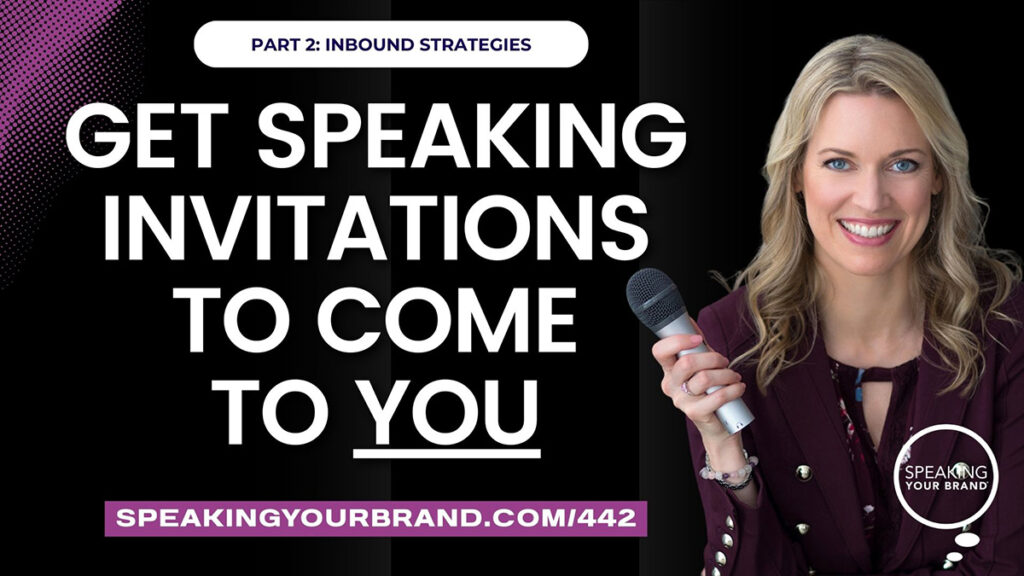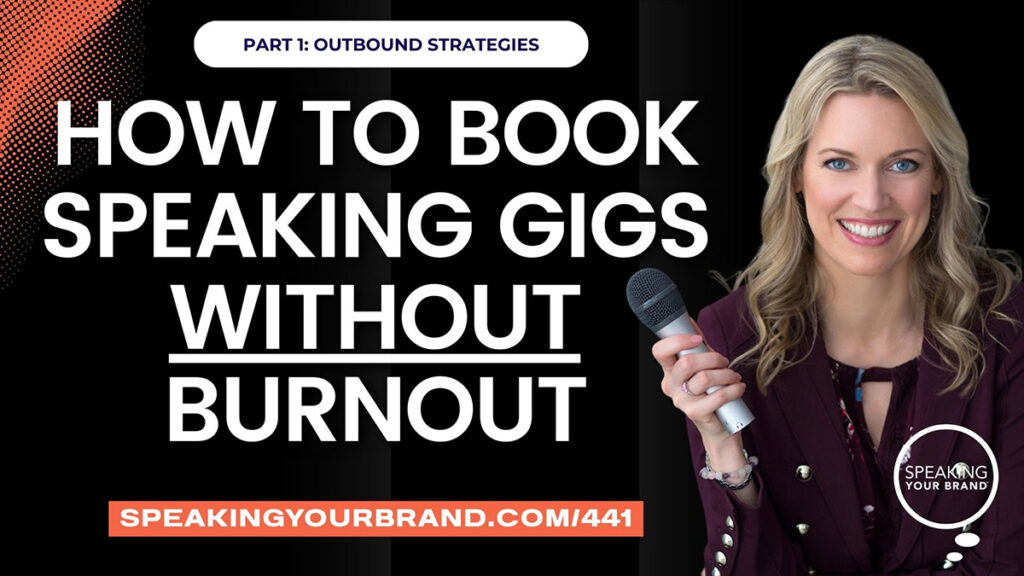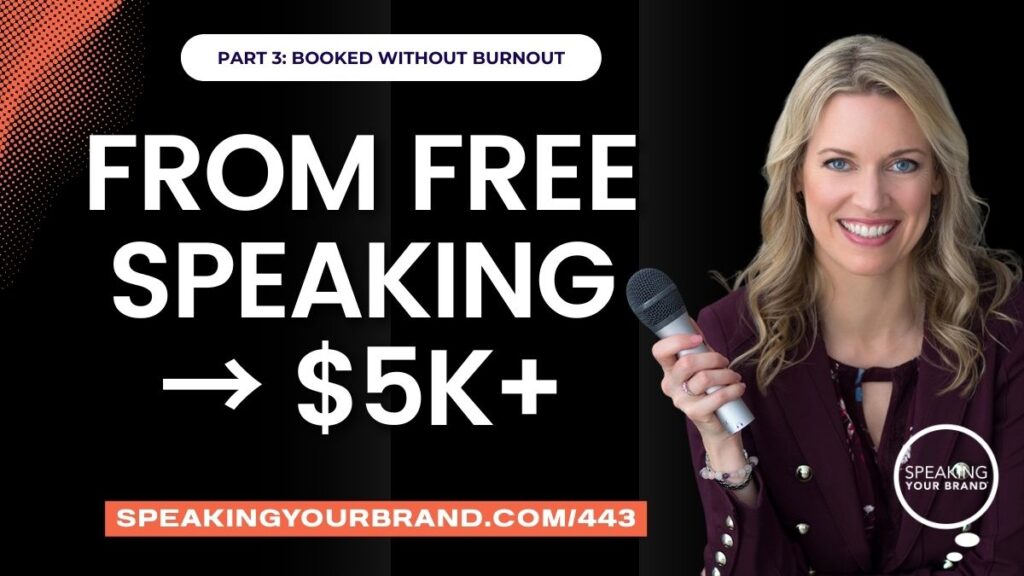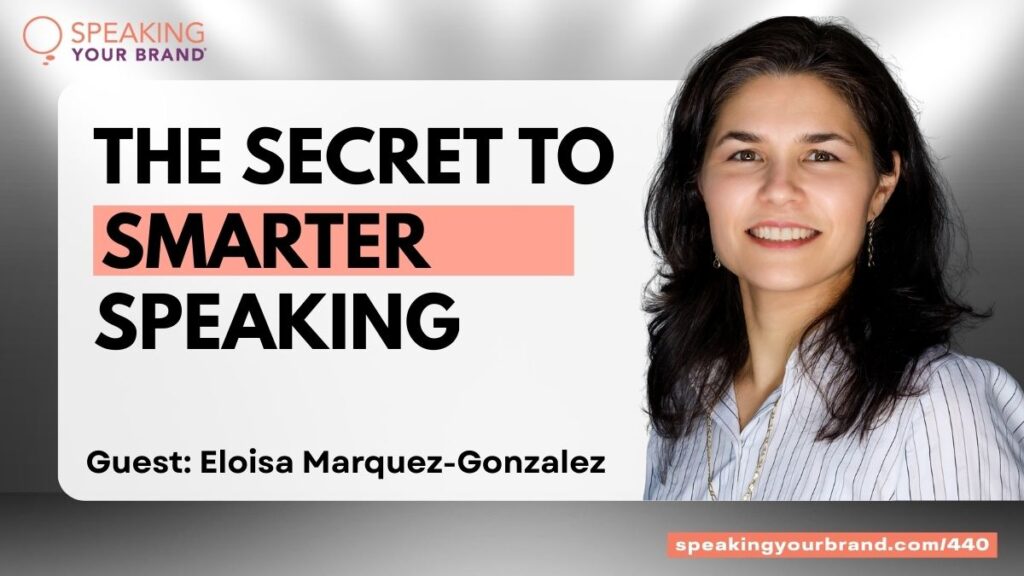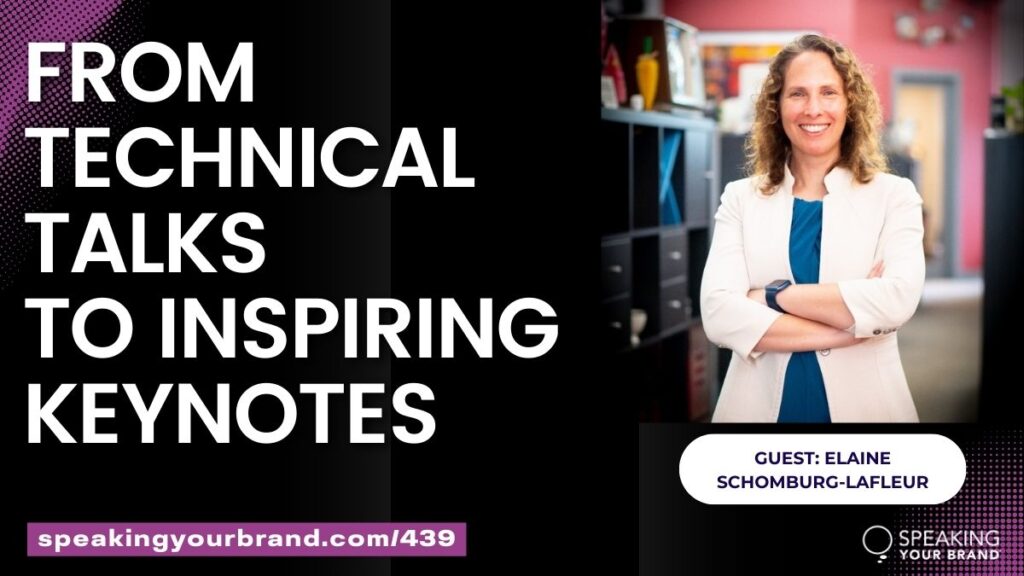443-SYB-Booked-Without-Burnout-Part-3.mp3: this mp3 audio file was automatically transcribed by Sonix with the best speech-to-text algorithms. This transcript may contain errors.
Carol Cox:
How can you get paid to speak? That’s what we’re looking at in part three of our series Booked Without Burnout. On this episode of the Speaking Your Brand podcast. More and more women are making an impact by starting businesses, running for office and speaking up for what matters. With my background as a TV political analyst, entrepreneur, and speaker, I interview and coach purpose driven women to shape their brands, grow their companies, and become recognized as influencers in their field. This is speaking your brand, your place to learn how to persuasively communicate your message to your audience. Hi and welcome back to the Speaking Your Brand podcast. This is your host, Carol Cox. As you know, speaking is incredible for building visibility and credibility. But at some point you wanted to also bring in revenue. You may not just want to speak, you want to get paid to speak. So how do you go from free talks to earning $2,500, $5,000, even $10,000 for keynotes and workshops? That’s where we’re going to look at today. This is part three of our new series on how to land more speaking engagements without burnout. Part one was about outbound strategies what to do when you pitch yourself. Part two was inbound strategies. How to set yourself up so opportunities come to you. And now in part three we’re looking at how to make the leap into paid speaking engagements.
Carol Cox:
Because here’s the truth. When women get paid to speak, it’s not just about the money. Although of course it is also that it’s about modeling equity, owning our expertise, and changing expectations of what leadership looks like on stage, including who gets paid to speak. So I’m going to share with you three specific strategies you can use to confidently ask for fees and get paid. Strategy number one know when you’re ready to charge. And here’s the thing. It’s probably sooner than you think. So here’s what I tell my clients when they ask me, when am I ready to start charging? Or I don’t feel like I’m worth getting paid to speak yet? If you’ve delivered your talk enough times to know that it lands or you’ve done enough speaking, whether it’s virtual or in person and workshops count in addition to maybe what you consider conference presentations or keynotes. If you’ve done enough speaking that you feel comfortable in that role. If you have a framework or a methodology that provides transformation, not just information. And if you have some social proof, photos, testimonials, video clips, if you have these things, then you’re ready. The biggest obstacle I find to getting paid to speak is ourselves. We put these expectations and limiting beliefs on us that someone else deserves to get paid to speak. But we don’t. But we do.
Carol Cox:
For example, I remember one of my clients and she’s not alone. She had been speaking for free for years. And again, if you look back at the past two episodes in this series, there can definitely be a time and place to speak for free. So it’s it’s not never to speak for free, but there are instances where it does make sense to get paid. Well, the first time this client asked for a fee and she was hesitant to do so, she really didn’t want to. She landed a $5,000 workshop. She had been ready for a long time. She just needed to give herself permission to ask and to receive. So that’s strategy number one. Know when you’re ready to charge and most likely you already are ready. Strategy number two position your value, not just the talk itself. This is where many speakers get stuck. They describe what they do as a presentation. But event organizers aren’t investing in a presentation. They’re investing in outcomes. They’re investing in an experience for their audience that makes them look good and makes sure that the audience raves about the event or the conference and wants to come back. So instead of saying, for example, I give a talk on leadership, say something like, I help leaders build teams that innovate faster and retain top talent. See the difference? One is information giving a talk on leadership.
Carol Cox:
The other is transformation. Helping leaders build teams that innovate faster and retain top talent. This is the same thing that you do in your business with the services and the programs that you market is focus on that outcome. Focus on the transformation that you’re providing to the audience for that event. This positioning moves you out of what I call the expert trap and into thought leadership. And that’s what event been organizers paid for. Strategy number three is to make sure you know what your pricing is when asked, so that you can say it back with confidence. There are different ways that you can structure your speaking fees. You can have a flat fee for, say, a keynote or a workshop, or you can combine things together. Maybe you have a speaking and a consulting package that goes together, or a speaking with some additional training along with it. Here’s what I often see that different types of places pay associations will often pay $1000 to $5000. Corporations tend to have bigger budgets, so they’ll pay 5 to $15,000, maybe more for conferences. If you are a breakout session speaker in, say, a multi-track event, they may pay an honorarium, but most likely not. Oftentimes you’ll just get a free ticket to that conference. So if you get an inbound speaking requests. Someone has found you and they reach out to you and they’re interested in having you speak at their event.
Carol Cox:
Perhaps they mention in their message that they have a speaker budget, or they want to know what your speaker fee is, or even if they don’t mention a fee at all. The key is to schedule a phone call or a zoom call with them. So often what I think happens is that you’ll get that imbalance speaking request, and then you just send back a reply with, oh, here, here are some of my topics and here’s my fee. Or maybe you don’t mention a fee at all. And then it kind of just dwindles from there. Instead, think of it as a regular lead for your business. You want to get them on a consultation call because you want to learn more about their event. What makes a successful speaker at their event? What have successful speakers look like in their past events? What do their audiences look like? What their audiences want? What kind of experience is the event looking for? Once you collect that information, then you’ll know number one are you a good fit for their event? And then number two you can position your presentation. See. Strategy number two that we just talked about as that transformation you’re providing for the audience not just information. Then during that phone call or zoom call they may ask you what is your speaker fee.
Carol Cox:
And then you can confidently tell them whatever it is, whether it’s $2,500, $5,000, $7,500, $10,000, whatever it happens to be, you can confidently say that back to them. You can also ask them, what is your budget for speakers? Sometimes they’ll go ahead and tell you what that is, and then you can decide if it’s a good fit for you and for that event. Sometimes if you ask them what is your budget, they may come back to you and just say, well, we don’t really know what, what is your fee? And then you can go from there. So it is a negotiation. So get comfortable with your negotiating skills. The worst thing that happens is that you quote something high. And it is just way more than that that they have a budget for or that they’re comfortable pain. And so that’s not necessarily a bad thing, especially if it involves travel. It may not make sense for you to travel. Leave your business. Leave your family for a fee that’s not high enough to compensate you for that time away. So it’s okay if it’s not a fit, but just be excited that you’re getting these inbound speaking invitations, and you’re going to collect data, and you’re going to learn what type of fee is in alignment with these different types of events.
Carol Cox:
So let’s do a quick recap. Number one, know when you’re ready to charge. And I think you already are. Number two position your value around transformation not just information. And number three package and price with confidence. Remember getting paid to speak is not just about adding revenue. It’s about stepping fully into your thought leadership, owning your expertise, and setting a standard not only for you, but for other women speakers out there too. If you would like to work with us to create your compelling signature talk, position your value, escape the expert trap and step into thought leadership and build a strategy that leads to paid opportunities. Join us in our online Thought Leader Academy program or at our one day in-person Speaking Accelerator workshop in Orlando. You can get the details on all of our programs and workshops at Speaking Your Brand.com under the Work with Us tab. In the next episode, we’re going to wrap up the series Booked Without Burnout, and I’m going to talk about should you Ever pay to speak. So we just covered getting paid to speak, but is there a time and place where it actually makes sense for you to pay to speak somewhere? And what would that look like? Make sure to hit follow in Apple Podcasts or Spotify so you don’t miss next week’s episode, as well as future ones. Until next time, thanks for listening.
Sonix has many features that you’d love including transcribe multiple languages, enterprise-grade admin tools, world-class support, advanced search, and easily transcribe your Zoom meetings. Try Sonix for free today.
